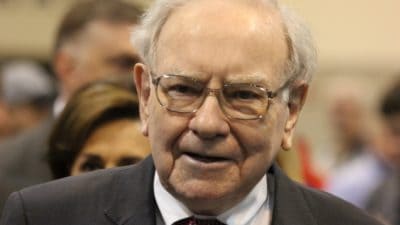It seems a long time ago now. But cast your mind back to last August, and specifically to Monday 24 August. London’s FTSE 100 index closed down 4.6% at 5,899, with stock markets in France, Germany and the United States down 5.5%, 4.9% and 3.6% respectively.
That’s right: it was 2015’s ‘Black Monday’. Not a patch on the original Black Monday, of course. On 20 October 1987, the FTSE plummeted 10.8%, and then fell by a further 12.2% the following day. In a rocky few days, investors saw a quarter of their net worth simply vanish.
But on Friday, London’s flagship FTSE 100 index closed at 5,804, its lowest closing value for three years. It marks a torrid start to 2016: the worst start to a new year in the FTSE’s 31-year history, and — according to stock market observer David Buik — the worst since 1928.
And as I write these words, the rot has continued, with the FTSE at 5,780, almost 120 points below its 24 August nadir.
Mixed signals
Not surprisingly, many investors are nervous. Wiser souls, though, are eyeing the market for bargains.
And with the FTSE at its lowest level for three years, there are a lot to be had, especially among businesses affected by the global rout in commodity prices.
That said, I think that oil and mining companies have further gloom to offer investors.
Why so? Because here in the UK, and in the United States, and in China, last week saw a slew of worrying economic statistics from economic sectors usually regarded as bellwether leading indicators.
Put another way, the story of the last few months has been a supply-led imbalance of supply and demand in commodity markets. And on top of that supply-led story, we may now be seeing the beginning of a demand-led downward pressure on prices, as real underlying economic activity declines.
Buy alert
All of which leads me to hark back to last August.
As you may remember, I mentioned back then that banker Morgan Stanley had issued a ‘full house’ buying alert, saying that all five of their market indicators were now flashing ‘buy’ — hence the ‘full house’ epithet.
It was, apparently, the first time that it had happened since January 2009, and only the sixth time in 20 years.
Typically, the bank pointed out, such signals mark the bottom of a V-shaped recovery, with markets posting — on average — a 23% gain over the following twelve months.
Leading indicator
That said, as Morgan Stanley itself points out, its ‘full house’ signals tend to be leading indicators: not calling the market’s bottom, but signalling the entry into bargain territory.
On three occasions, for instance, the market’s eventual low point arrived some months later — and was typically around 20% or so lower than when the buy alert was issued.
So the present downturn may have further to go.
The market’s recent high point was on April 27, when the FTSE reached 7,104. At today’s 5,780, the market has now fallen 19% from there. And it’s fallen just 5% from Morgan Stanley’s ‘full house’ buying alert.
So there could be further to go. Much further.
What to do?
The first thing to do is not to read too much into any such financial soothsaying. Predicting the movements of financial markets is an art, not a science — and even then, an art with a great deal of uncertainty surrounding it.
Nevertheless, with economic indicators pointing downwards, commodity prices continuing to soften, and starlings exhibiting unusual migration behaviour, it’s wise to be cautious.
Okay, I made that last one up.
But the point, I hope, is well made: the name of the game is positioning ourselves as investors for what might occur, rather than confidently waiting for it to happen.
So there seem to be two sensible courses of action.
Two-pronged plan
First, decent well-managed businesses — with decent fundamentals, decent managements and decent track records — are now roughly 20% cheaper than they were last April.
The share prices of companies such as Unilever and drinks giant Diageo are now beginning to look interesting. In recent times I’ve also bought into Cobham and IMI.
So it’s worth keeping an eye on your watch list, ready to strike if Mr Market throws a bargain your way. (You do have a watch list, don’t you?)
Second, keep some powder dry. If the FTSE sinks to 5,100 or so — or even lower — then even buying a bog-standard index tracker will look like a stroke of genius.







